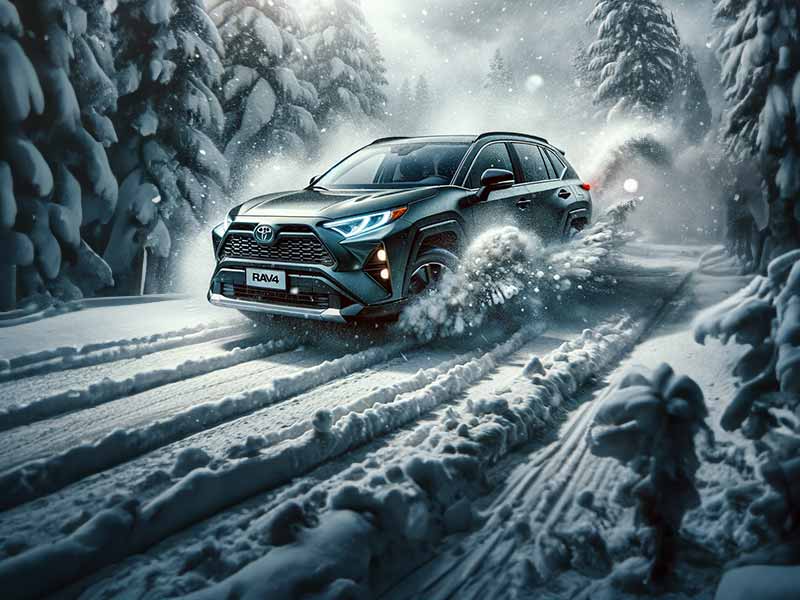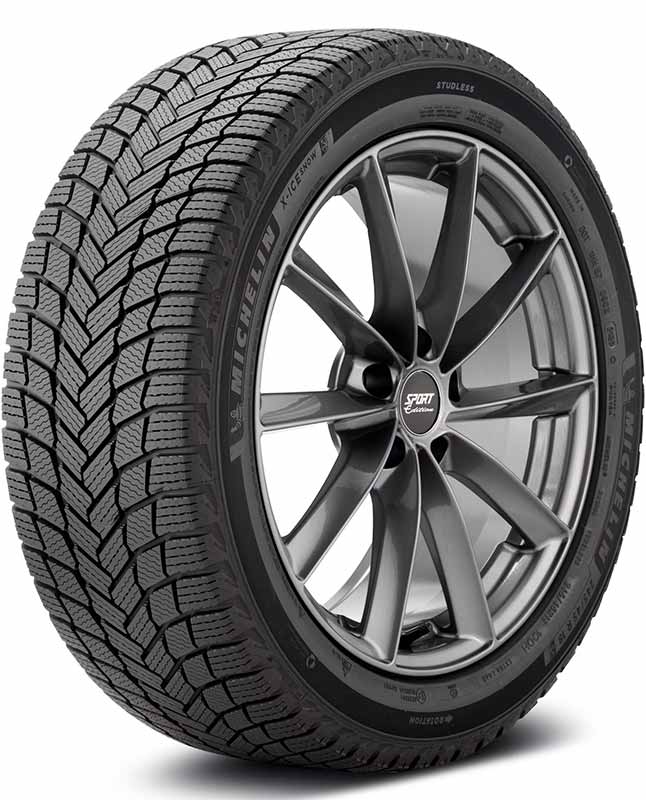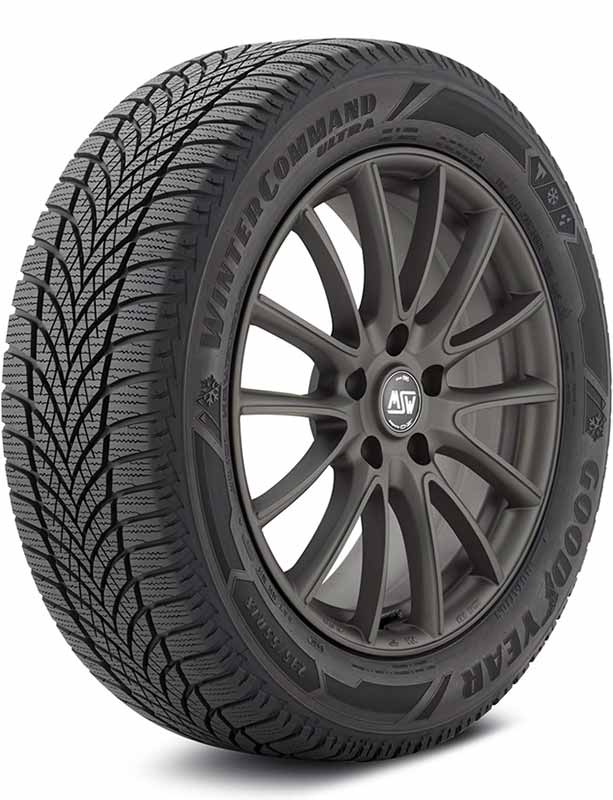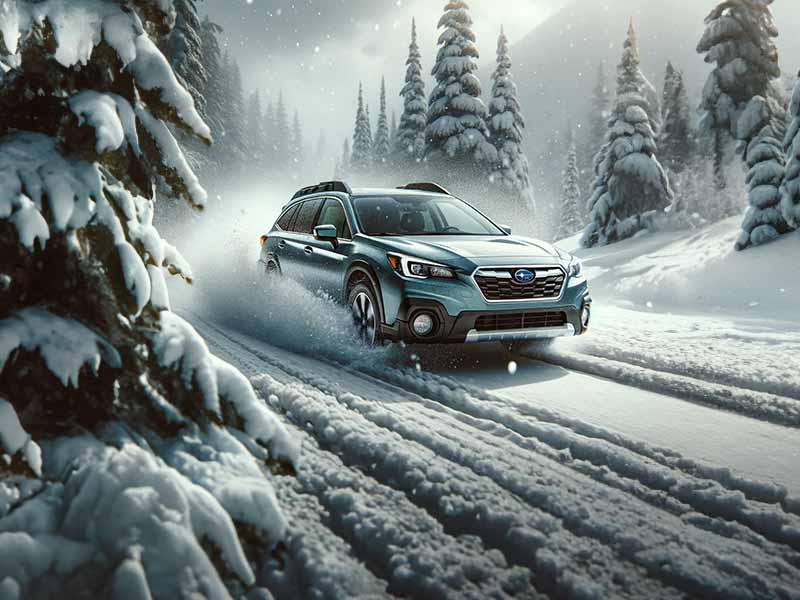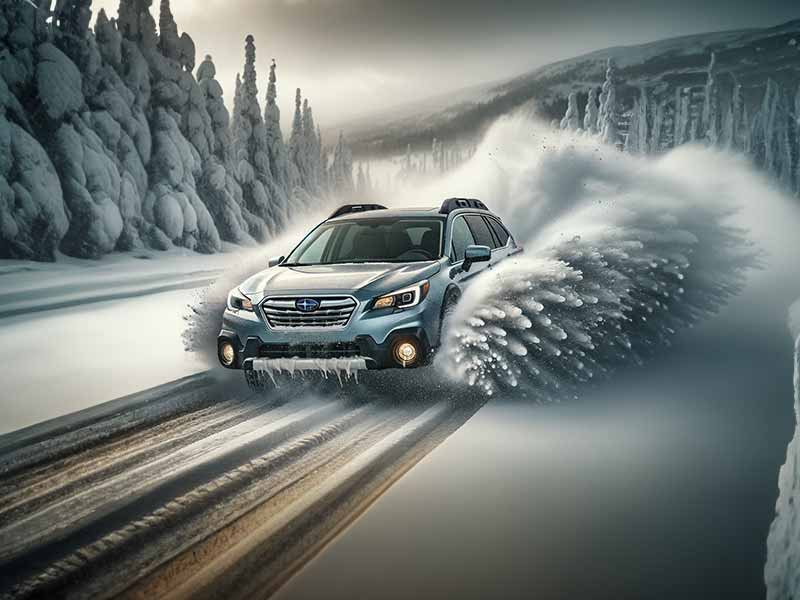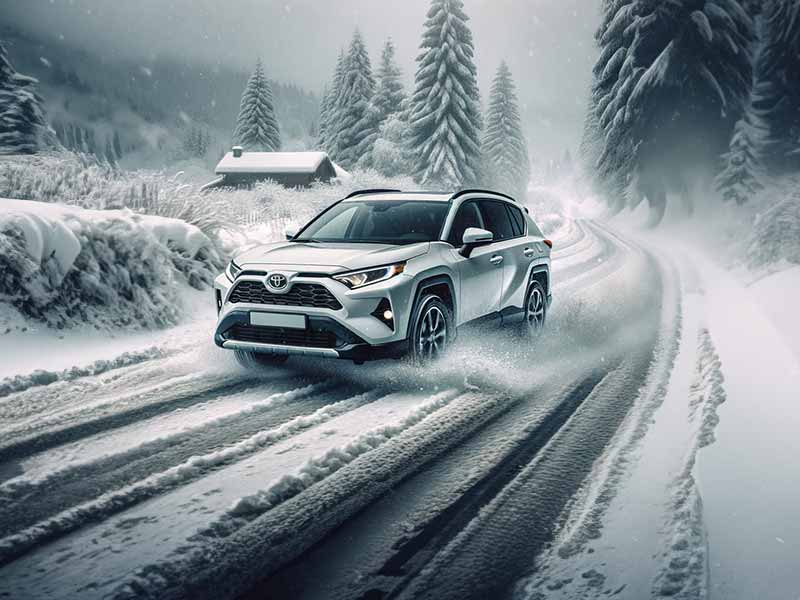Winter is coming, and with it, the slippery challenge of icy roads. Whether you’re dashing through the snow to work, or just trying to survive a frozen parking lot, choosing the right winter tire is crucial. But with options like Michelin X-Ice Snow and Goodyear WinterCommand Ultra on the table, how do you know which tire will keep you safe and sound?
The Michelin X-Ice Snow offers superior deep snow traction and a quieter, smoother ride, making it ideal for heavy snow areas and those prioritizing comfort. The Goodyear WinterCommand Ultra excels in wet conditions and offers better hydroplaning resistance, suitable for rainy or slushy environments.
In this article, we explore the Michelin X-Ice Snow and Goodyear WinterCommand Ultra tires, comparing their performance in wet, dry, and snowy conditions, and assessing their comfort and durability. We also review other top competitors in the winter tire market to give you a comprehensive view of your options.
Michelin X-Ice Snow
Customer Rating
Overall Rating
8.8 of 10
Wet Weather
8.6 of 10
Winter Weather
9.0 of 10
Tread Wear
8.8 of 10
Dry Weather
8.8 of 10
Ride Comfort
8.7 of 10
UTQG
Uniform Tire Quality Grade
UTQG Treadwear Rating: N/A
UTQG Traction Rating: N/A
UTQG Temperature Rating: N/A
Mileage Warranty
None
Find The Best Price
Key Performance Metrics
Hydroplaning: 9.1 of 10
Wet Grip: 9.1 of 10
Cornering: 8.5 of 10
Dry Grip: 8.8 of 10
Responsiveness: 8.6 of 10
Mild Snow Grip: 9.3
Heavy Snow Grip: 9.0
Ice Grip: 8.7
Comfort Level: 9.0 of 10
Road Noise: 8.5 of 10
When the mercury dips and the road gets icy, you want a tire you can trust. Enter the Michelin X-Ice Snow. This tire is engineered to tackle the harsh demands of winter driving, balancing enhanced traction with comfort. Let’s dive into what makes this tire a contender in the frosty arena of winter tires.
Wet Conditions
- Hydroplaning Resistance: 8.7
- Wet Traction: 8.8
In wet conditions, the Michelin X-Ice Snow scores an overall 8.8. It shows strong resistance to hydroplaning, meaning it maintains better contact with the road even in slushy or wet conditions. This is crucial for maintaining control during rainy winter days.
Dry Conditions
- Corner Stability: 8.5
- Dry Traction: 8.8
- Steering Response: 8.7
On dry winter days, this tire provides solid performance with a score of 8.7 overall. It offers good corner stability and responsive steering, making it reliable for day-to-day winter driving where roads are clear but cold.
Winter/Snow
- Light Snow Traction: 9.3
- Deep Snow Traction: 9.0
- Ice Traction: 8.7
Where the Michelin X-Ice Snow really shines is in its snow handling capabilities. It scores a commendable 9.0 in winter conditions, with excellent light and deep snow traction. Ice traction, while not leading the pack, is still robust, providing a secure feel underfoot—or rather, under tire.
Comfort
- Ride Quality: 9.0
- Noise: 8.6
Comfort is a strong suit for the X-Ice Snow, rating 8.8 overall. It offers a smooth ride with reduced noise levels, which is a boon for anyone who spends a lot of time on the road during the winter months.
Treadwear
- Treadwear: 8.8
Durability is key in winter tires, and the Michelin X-Ice Snow does not disappoint with a treadwear rating of 8.8. This suggests that the tires will not only perform well but also last through multiple seasons, providing good value over time.
Pros
- Excellent traction in both light and deep snow
- High-quality ride comfort
- Durable tread for longer life
Cons
- Ice traction is good but not the best in its class
- Premium pricing might be a consideration for budget-conscious buyers
Goodyear WinterCommand Ultra
Customer Rating
Overall Rating
8.7 of 10
Wet Weather
8.9 of 10
Winter Weather
8.9 of 10
Tread Wear
8.5 of 10
Dry Weather
8.7 of 10
Ride Comfort
8.5 of 10
UTQG
Uniform Tire Quality Grade
UTQG Treadwear Rating: N/A
UTQG Traction Rating: N/A
UTQG Temperature Rating: N/A
Mileage Warranty
None
Find The Best Price
Key Performance Metrics
Hydroplaning: 8.9 of 10
Wet Grip: 8.9 of 10
Cornering: 8.7 of 10
Dry Grip: 8.7 of 10
Responsiveness: 8.8 of 10
Mild Snow Grip: 9.3
Heavy Snow Grip: 8.7
Ice Grip: 8.7
Comfort Level: 8.7 of 10
Road Noise: 8.3 of 10
The Goodyear WinterCommand Ultra is designed to tackle winter’s worst, offering impressive grip and control in severe snowy, wet, and icy conditions. Let’s dissect the features and performance of this tire to see why it’s a strong contender in the winter tire market.
Wet Conditions
- Hydroplaning Resistance: 8.9
- Wet Traction: 8.9
In wet conditions, the Goodyear WinterCommand Ultra scores a solid 8.9. Its excellent hydroplaning resistance means that water and slush are efficiently pushed away from the tire, ensuring better contact with the road and reducing the risk of losing control in wet winter weather.
Dry Conditions
- Corner Stability: 8.7
- Dry Traction: 8.6
- Steering Response: 8.7
For dry winter roads, this tire offers reliable performance with an overall score of 8.7. It provides stable cornering and responsive steering, crucial for navigating dry, cold stretches where handling can often feel different due to lower temperatures.
Winter/Snow
- Light Snow Traction: 9.3
- Deep Snow Traction: 8.6
- Ice Traction: 8.7
The WinterCommand Ultra is a powerhouse in light snow, with a traction score of 9.3, equal to the Michelin X-Ice Snow. However, it falls slightly short in deep snow traction. Ice traction is competent, ensuring steady performance but not topping the charts.
Comfort
- Ride Quality: 8.7
- Noise: 8.3
Comfort scores are moderate at 8.5 overall. The tire provides a good ride quality but may be a bit noisier compared to some of its competitors, which could be a trade-off for its aggressive winter handling capabilities.
Treadwear
- Treadwear: 8.4
The treadwear rating of 8.4 indicates that while the WinterCommand Ultra is durable, it might not last as long as some other premium options. This is something to consider if tire longevity is a high priority for you.
Pros
- Superior hydroplaning resistance and wet traction
- Strong performance in light snow conditions
- Reliable handling in dry cold conditions
Cons
- Slightly lower performance in deep snow compared to its peers
- Noise level higher than some competitors
- Treadwear slightly below some other top-tier winter tires
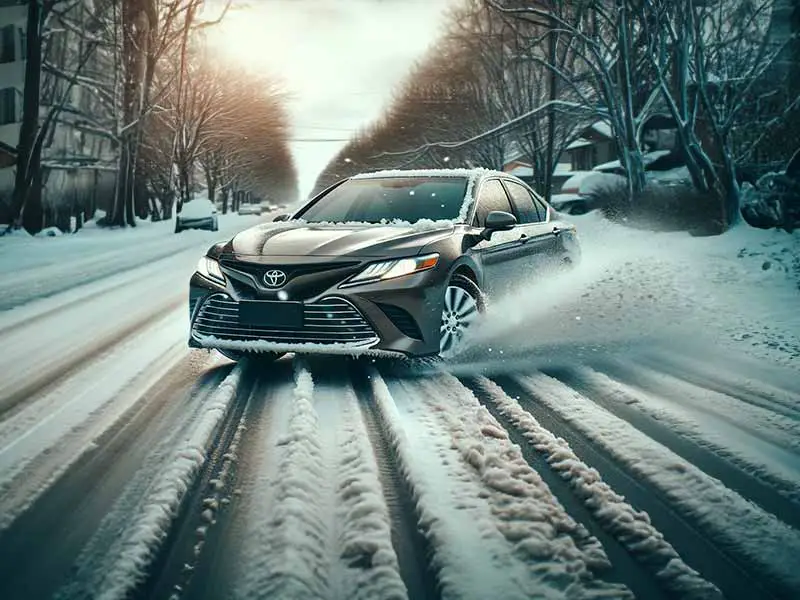
Comparative Analysis
Choosing between the Michelin X-Ice Snow and the Goodyear WinterCommand Ultra can be challenging, as both offer excellent features for winter driving. In this section, we’ll break down the direct comparisons in key performance areas to help you determine which tire might best meet your winter driving needs.
Wet Performance
Michelin X-Ice Snow:
- Hydroplaning Resistance: 8.7
- Wet Traction: 8.8
Goodyear WinterCommand Ultra:
- Hydroplaning Resistance: 8.9
- Wet Traction: 8.9
Analysis: The Goodyear WinterCommand Ultra slightly outperforms the Michelin X-Ice Snow in wet conditions. With a marginally better score in both hydroplaning resistance and wet traction, the Goodyear tire offers enhanced stability and grip on wet and slushy roads, making it an excellent choice for areas with wet winters.
Dry Performance
Michelin X-Ice Snow:
- Corner Stability: 8.5
- Dry Traction: 8.8
- Steering Response: 8.7
Goodyear WinterCommand Ultra:
- Corner Stability: 8.7
- Dry Traction: 8.6
- Steering Response: 8.7
Analysis: In dry conditions, both tires perform comparably, though the Michelin X-Ice Snow offers slightly better traction while the Goodyear has superior corner stability. This means the Michelin may provide a bit more confidence in straight-line dry conditions, while the Goodyear edges out in handling curves and corners.
Snow and Ice Performance
Michelin X-Ice Snow:
- Light Snow Traction: 9.3
- Deep Snow Traction: 9.0
- Ice Traction: 8.7
Goodyear WinterCommand Ultra:
- Light Snow Traction: 9.3
- Deep Snow Traction: 8.6
- Ice Traction: 8.7
Analysis: Both tires offer strong performance in light snow conditions, but the Michelin X-Ice Snow takes the lead in deep snow traction. This makes the Michelin a better option for areas that experience heavy snowfall. Ice traction is a tie, indicating that either tire would be a reliable choice for icy conditions.
Comfort and Treadwear
Michelin X-Ice Snow:
- Ride Quality: 9.0
- Noise: 8.6
- Treadwear: 8.8
Goodyear WinterCommand Ultra:
- Ride Quality: 8.7
- Noise: 8.3
- Treadwear: 8.4
Analysis: The Michelin X-Ice Snow scores higher in comfort and treadwear. It offers a smoother and quieter ride, which could be a significant factor for those who spend a lot of time on the road. Additionally, its higher treadwear rating suggests it might offer better long-term value through longevity.
Conclusion
Choosing between the Michelin X-Ice Snow and the Goodyear WinterCommand Ultra depends largely on your specific needs and driving conditions:
- For wetter conditions or better cornering stability: Goodyear WinterCommand Ultra
- For deeper snow and overall comfort and longevity: Michelin X-Ice Snow
Both tires offer robust winter performance, but the nuances in their capabilities mean that the right choice will depend on the typical weather conditions you face and your priorities in ride comfort and tire longevity.
Other Competitors in the Market
While the Michelin X-Ice Snow and Goodyear WinterCommand Ultra are strong contenders in the winter tire market, several other brands also offer noteworthy performance. Let’s explore some of these alternatives, examining their key strengths and weaknesses to see how they stack up against the competition.
Bridgestone Blizzak WS90
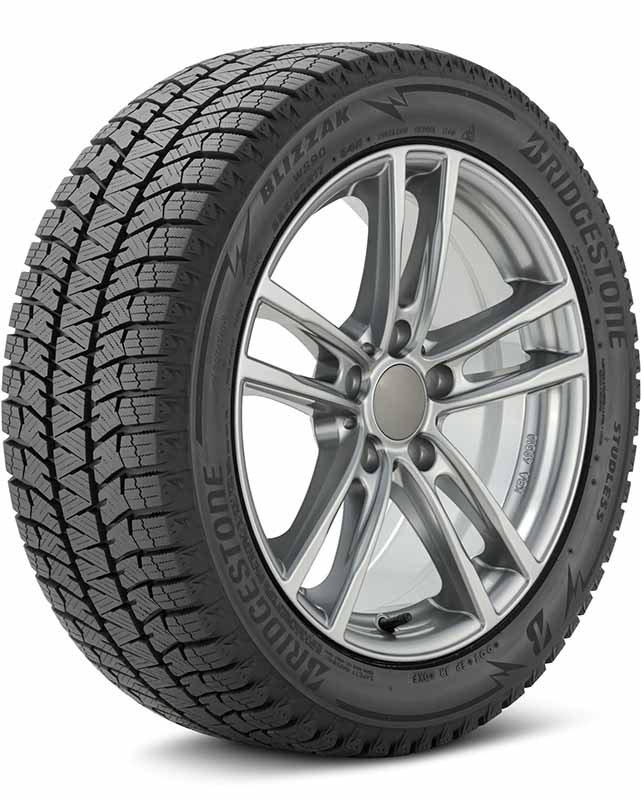
Performance Overview:
- Wet: 9.1
- Dry: 8.8
- Winter/Snow: 9.2
- Comfort: 8.5
- Treadwear: 8.4
Strengths:
- Exceptional wet and snow traction, providing superior safety in adverse conditions.
- Balanced performance in both wet and dry settings, making it versatile for varying winter climates.
Weaknesses:
- Slightly lower comfort and noise ratings, which might affect long-distance drivers.
- Treadwear is good but not the best in class, indicating potential for quicker wear than some competitors.
Continental VikingContact 7

Performance Overview:
- Wet: 8.7
- Dry: 8.6
- Winter/Snow: 8.8
- Comfort: 8.9
- Treadwear: 8.5
Strengths:
- High comfort rating, ideal for drivers prioritizing a smooth and quiet ride.
- Strong performance in light snow conditions, offering reliable winter handling.
Weaknesses:
- Marginal performance in deep snow and ice, which may not be suitable for extreme winter conditions.
- Slightly lower wet and dry traction ratings compared to leading competitors.
Nokian Hakkapeliitta R3
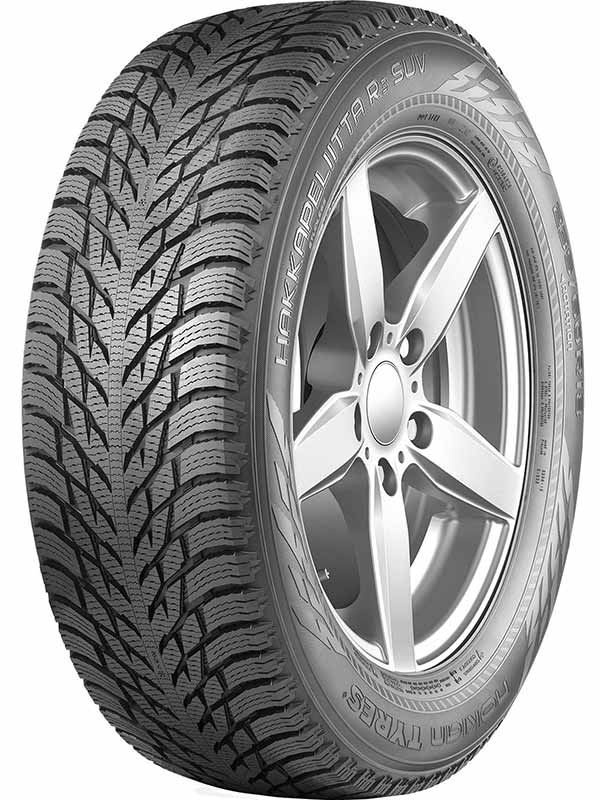
Performance Overview:
- Wet: 8.8
- Dry: 7.1
- Winter/Snow: 9.4
- Comfort: 8.8
- Treadwear: 8.0
Strengths:
- Top-tier performance in winter/snow conditions, especially suited for harsh northern climates.
- Excellent hydroplaning resistance and light snow traction, enhancing driver safety.
Weaknesses:
- Lower scores in dry conditions, which might compromise handling in non-snowy but cold weather.
- The lowest treadwear rating among the mentioned models, suggesting a shorter lifespan.
These competitors each bring unique strengths to the table, making them worthy of consideration based on specific needs and driving conditions. Whether you prioritize comfort, durability, or specific handling capabilities in snow or wet conditions, there’s a tire model available to meet those requirements. Always consider your typical driving environment and personal preferences when selecting a winter tire to ensure optimal performance and safety.
Resources
Below are some links you may find helpful when learning about tires:
Final Thoughts
Deciding between the Michelin X-Ice Snow and Goodyear WinterCommand Ultra depends largely on your specific driving conditions and needs. Michelin’s X-Ice Snow is your go-to for superior performance in deep snow and overall comfort, making it great for regions with severe winters.
On the other hand, the Goodyear WinterCommand Ultra stands out in wet conditions and offers robust hydroplaning resistance, ideal for places with wet, slushy winters. By understanding these key differences and evaluating your typical winter driving scenarios, you can choose a tire that ensures safety and performance.
Good luck and happy motoring.
